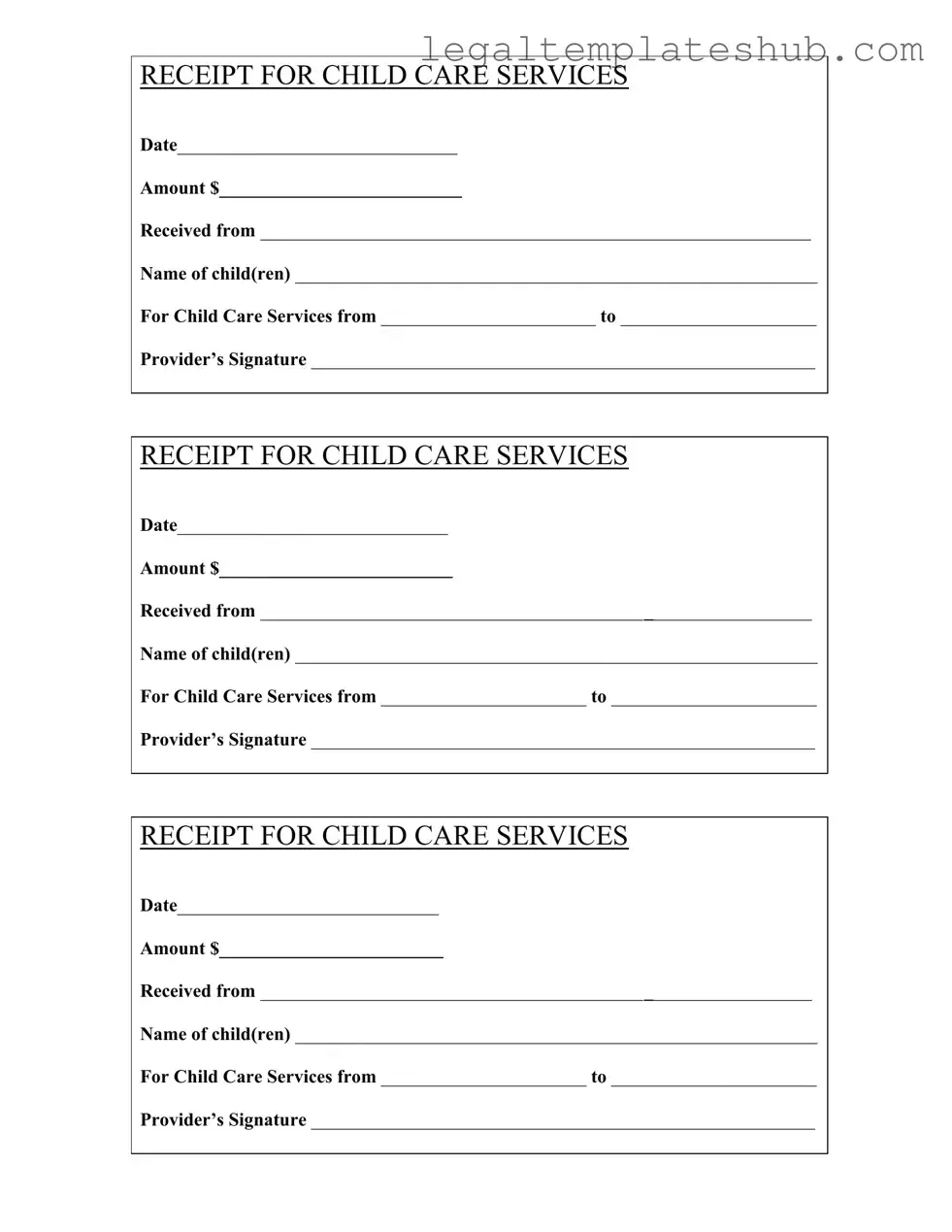Blank Childcare Receipt PDF Form
The Childcare Receipt form is a document used to acknowledge payment for childcare services. This form includes essential details such as the date, amount paid, and the names of the children receiving care. To ensure proper record-keeping, it is important to fill out the form accurately.
Start the process of documenting your childcare payments by filling out the form below.
Access Editor
